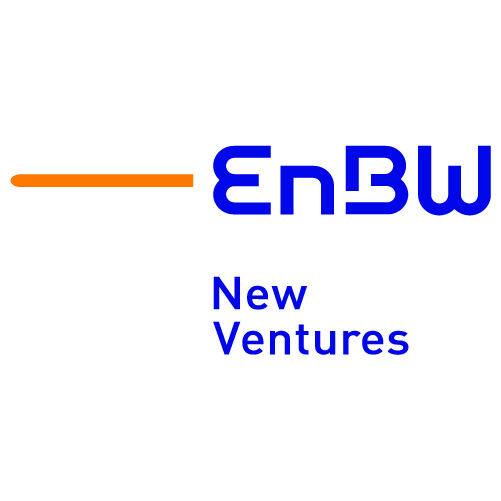Giants and Innovators: Harmonizing the Collaboration
May 9, 2024
Interviewed by Nicolas Sauvage on November 19th, 2020
Heriberto Diarte told the Corporate Venturing Insider audience and host, TDK Ventures President Nicolas Sauvage, that the seminal event in his development came when he joined his family’s supermarket chain just as the Walmart leviathan was beginning to stir in Mexico. The existential challenge was too much to overcome, but the setback became the crucible for his transformative trajectory, which led him to found and serve as CEO of Schneider Electric Ventures.
Heriberto describes himself as a resilient Mexican entrepreneur whose professional journey commenced at the tender age of 17. Undaunted by youth, he initiated the first in a series of business ventures that would later shape his future career. He offered advice on navigating the evolving landscape while blending elements of entrepreneurship with the structured world of corporations.
Gaining Diverse Experience
Heriberto’s resilience and drive eventually led him to the United States, where he attended Stanford University and Harvard’s Kennedy School of Government. An elite education helped him cultivate the skills and hone the acumen that has served him well throughout his career. After school, he embarked on a seven-year odyssey with CEMEX, navigating M&A and deftly orchestrating post-merger integrations. This phase galvanized his expertise and cultivated his insight into the corporate realm. His entrepreneurial fire never dimmed as he built new enterprises that opened a career path that led to Silicon Valley, where he engineered a high-tech wearable company. Subsequently, his journey meandered through the enigmatic realm of private equity before a pivotal juncture steered him to Schneider Electric Ventures.
He called the idea of creating Schneider’s CVC component his ‘dream job.’ “They wanted someone who had managed large companies,” he said. “So my experience gave them confidence that I understand large industrial companies. Second, they wanted somebody who had rolled up their sleeves and created businesses from scratch. And third, they wanted somebody with investment experience; I happened to be the only guy who could tick the three boxes.”
Empathy and Understanding
In the heart of the discussion lies a poignant observation- corporate venturing demands the blend of both corporate and entrepreneurship experience. This amalgamation endows ventures with a unique perspective, one that allows them to fathom the entrepreneur’s journey, discern challenges, and guide them with sagacity.
Empathy is an attribute that assumes paramount importance in the startup ecosystem. Startups, he states, are akin to brave souls leaping off cliffs while assembling their planes on the way down. The empathetic understanding of their struggle, and the relentless pursuit of an uncharted path, become the cornerstone of a venture capitalist’s role. As he astutely observes, the bedrock of evaluating startups lies in two pivotal factors: gauging the total adjustable market and understanding the team dynamics. But the true essence of empathy lies in decoding the unspoken cues, identifying gaps that may jeopardize flight, and addressing them earnestly.
Heriberto’s explanation of empathy and practical understanding is a stark reminder that while corporations thrive on structure, startups are a symphony of chaos and innovation. With empathy at the forefront, and armed with an understanding of the entrepreneurial tightrope, corporate venturers can play a vital role in shaping the trajectories of these brave endeavors.
Day One: Starting up a CVC
When he was hired to establish Schneider Electric’s venture arm, he knew that starting a CVC would not be easy. Just like founding one of his businesses from scratch, he had to begin somewhere. Heriberto recounted being the sole employee in the nascent venture, grappling with an avalanche of responsibilities, and racing against time to meet a pent-up demand for investments. The challenges were aplenty, yet his relentless execution and swift decisions garnered credibility and showcased progress.
He reflected on a vital lesson learned early in corporate venturing: while the initial stages might mirror the turbulence of a startup, successful execution hinges on setting the right foundations. When he launched the CVC, his interactions with the CEO were tantamount to strategic negotiations that were key when aligning expectations.
“I said, we’re going to do it the right way, because otherwise it won’t work, and his reaction was, ‘Wow. That makes a lot of sense, this confirms you’re the right guy because nobody talks to me like that,’ ” Heriberto remembered.
His firm stance on securing autonomy, optimal resources, and harmonized team dynamics helped him build the team he has today. This ethos seamlessly converges with his broader insights into the corporate venture panorama- a realm inherently shaped by the power law dynamics synonymous with startups, characterized by their high-risk, high-reward fabric. These dynamics necessitate a meticulously tailored strategy that acknowledges the inherent uniqueness of each venture, echoing Heriberto’s holistic perspective on team building.
Syndicating a Financial VC with a Corporate VC
Although we all know financial VCs are very different than CVCs, the collaboration between the two can offer startups unique advantages, including domain expertise, customer access, and the ability to leverage the parent company’s resources. The combination of independence and corporate backing, when executed efficiently, can lead to substantial value creation for startups, enabling them to achieve milestones that might otherwise be out of reach:
- Value Addition by CVC Syndication — While many BCs claim to be value-add investors, oftentimes that is not the case. However, a well-executed CVC strategy can bring value to startups.
- Domain Expertise — Parent company industry insights can provide startups with insights, guidance, and mentoring that financial VCs might lack, leading to better decision-making and strategic direction for startups.
- Access to Customers — CVCs can leverage their existing customer relationships to open doors for their start-ups. Market access can help startups validate their products or services more quickly and efficiently, potentially accelerating their growth and market penetration.
- Vendor Status — Startups may profit from introducing their products to the CVC’s mother ship. The corporate entity is a potential early customer, giving the entrepreneurial organization a real-world testing ground to refine its offering before the broader market launch.
- Synergy with Mothership Resources — Successful CVCs can tap into the resources of their parent companies including market channels, possibly fast-tracking portfolio companies’ monetization.
- Independence with Benefits — The ideal CVC setup balances independence and alignment with the parent company. CVCs should have the autonomy to operate like traditional venture capitalists while maintaining the incentive and motivation to harness their parent company’s resources effectively.
- Credibility — The credibility of a well-established corporate entity like Schneider Electric played a critical role in convincing large customers to adopt the innovative solution. This level of credibility and access to major players in the industry is often unique to CVCs and can be a significant differentiator compared to independent VC firms
Navigating the Corporate Mothership-Portfolio Company Relationship
Heriberto said choreographing the mothership/startup relationship “is like trying to make an elephant dance with a hummingbird.”
The first key hurdle is timing. Corporate giants and startups often move at different rates. To address this, Heriberto recommends that companies refrain from prematurely presenting startups to business units. Instead, they should be patient and wait until the startup is truly ready to deliver a viable solution. This approach eliminates the risk of presenting half-baked solutions that can deter business units and waste time.
The second requirement is building credibility through successful collaborations. While early attempts may face setbacks and failures, persistent efforts lead to success. As these successes accumulate, corporate teams begin to trust the judgment of the innovation teams responsible for identifying and promoting startups. This evolving credibility opens doors to more fruitful engagements between the mothership and portfolio companies.
The third key aspect Heriberto brought up was how corporates have limited capabilities to absorb new technologies and innovations. He stressed that companies should be cautious and not overwhelm business units with excessive collaboration requests. Instead, it is essential to prioritize initiatives that align with the company’s strategic goals and where the potential for impact is highest. Recognizing the bandwidth constraints of business units ensures that resources are allocated judiciously and effectively.
The discussion concluded with a valuable perspective on investing in companies that may not yet align with the corporate vision or aren’t fully ready for integration. The consensus was that it’s acceptable to support startups, even if their potential isn’t immediately clear to the larger organization. The key is to provide patient support, nurturing the startup until the time is right for integration. Frequent conversions and ongoing engagement help plant the seed of understanding, allowing corporate teams to grasp the value over time, even if it takes several meetings and a longer horizon to see the benefits.

 Combining an entrepreneurial mindset with corporate knowledge is a valuable approach, as demonstrated by the ability to initiate businesses from the ground up, navigate mergers and acquisitions, and collaborate with large industrial firms.
Combining an entrepreneurial mindset with corporate knowledge is a valuable approach, as demonstrated by the ability to initiate businesses from the ground up, navigate mergers and acquisitions, and collaborate with large industrial firms. 



















